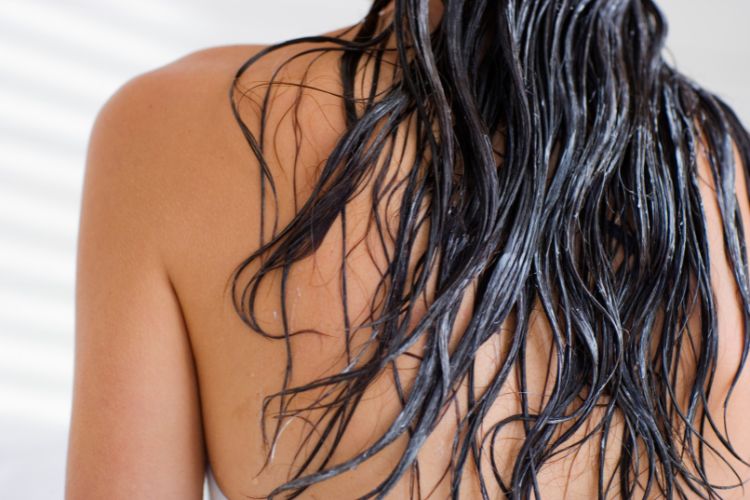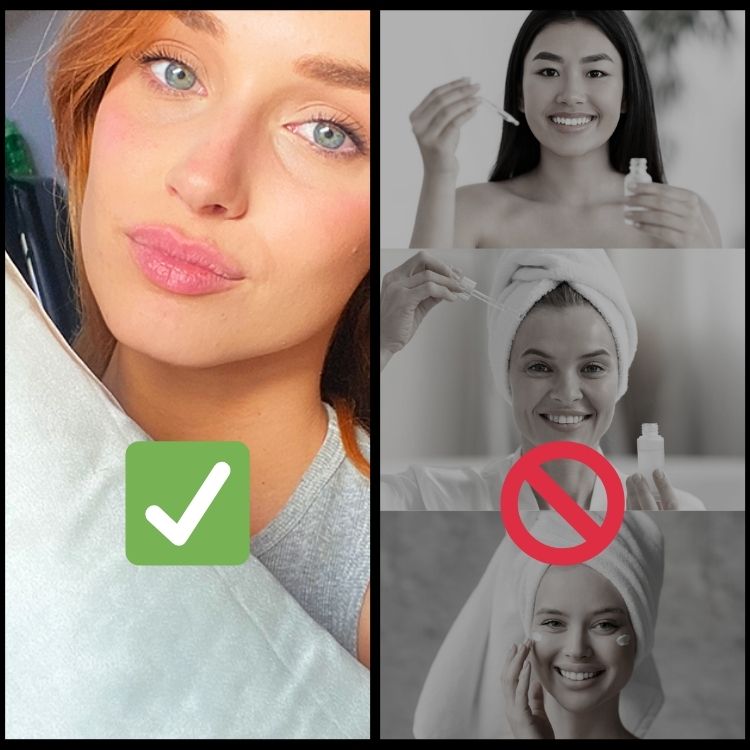Listen to an audio transcription of this post
Whether you’re looking to prevent dryness & split ends or nourish already damaged hair, there are measures you can take in your day-to-day routine to restore moisture. Keep reading to learn how to moisturize hair the right way to look and feel your best.
What Are Causes of Dry Hair?
Diet and hydration
Many factors contribute to dry and brittle hair. Diet and hydration play an important role in keeping your hair healthy and moisturized. Drinking plenty of water and supplementing your diet with foods rich in vitamins and nutrients will help your hair shine from the inside out.
UV rays
The sun is another natural element that causes hair dryness. Too much sun exposure can dry out your hair in the long term. It’s important to offer your hair UV protection by using a heat protectant or hat when you plan to be in the sun for extended periods of time.

Styling
Popular styling methods that use heat tools can also damage your hair, especially when done frequently. Harmful ingredients in styling products and harsh chemical treatments can also strip your hair of nutrients and natural oils, causing dryness and even breakage.
Limit heat styling to a minimum if you think it could be the cause of your dry hair.
Health
Dry hair can also be caused by a variety of health conditions. If you suspect this may be the case, consult a wellness professional about remedies for personal health conditions.
It’s important to take care when treating dry hair before and after the damage is done. Taking both preventative and reparative steps to protect your hair will keep your hair healthy and moisturized in the long run.
Hair Care Routine for Healthy Hair
Healthy hair is a direct result of how well you treat your hair. Having a consistent, nourishing hair care routine will train your hair to retain moisture.

You don’t necessarily have to spend on expensive hair care products—there are home remedies and simple adjustments to your existing routine that can help moisturize dry hair.
Audit Your Hair Products
Moisturized hair begins with using quality products. Here are a couple steps you can take to moisturize dry hair.
- Check your products for harmful ingredients such as sulfates, parabens, alcohols, and formaldehydes that strip dry hair of its natural oils and prevent your hair shaft from retaining moisture.
- Use a hydrating leave-in conditioner on wet hair after every wash to thoroughly moisturize your hair and repair split ends.

Washing Dry Hair
When you wash, it’s best to use hot water to open your hair cuticle, then rinse with cold water to close it back up. Moisturize dry hair using a natural oil such as coconut oil or apricot kernel oil.
How often should you wash your hair?
Depending on your hair type, you may not need to do a daily shampoo—especially if your hair is dry. Shampooing your hair frequently can strip your hair of its natural oils, causing moisture loss. Washing every other day or even just a couple of times a week can help bring moisture back to your hair.
When to shampoo?
If you have curly, mixed-textured, or dry hair, you may want to try co-washing—washing with only conditioner. This can help soften and moisturize your hair without stripping its oils.
Beware that co-washing too often can dry out your scalp, so alternating between cleansing with a quality shampoo and co-washing can be beneficial.

Limit the Use of Hot Tools
If you heat style with tools such as curling irons, flat irons, or blow dryers, your hair can easily become weak and damaged from the constant opening of your hair cuticle. Experiment with heatless style to save your ends.
How to achieve heatless curls
Try creating heartless curls using a silk scarf or oversized scrunchie. Separate damp hair into equal sections. Wrap each section around the scarf, and secure by tying it up while you sleep. When you wake up, untie each piece and finger comb. You will have beautiful heatless curls.
How to protect your hair from heat
If you have to use heat on your hair, here are a few ways to mitigate heat damage:
- Blow drying at the root will result in less hair damage to your ends.
- Go for a heat protectant that will act as a protective layer from your hot styling tools, sealing in your hair's moisture.
- Manage settings on your hot tools to lower the heat, protecting your natural hair.

Incorporating Silk
Silk has many benefits for your hair—helping to prevent frizz and tangles, lessening breakage and split ends, and enhancing shine. Not only does it feel luxurious, silk is essential for keeping your hair happy and healthy.
Benefits of Silk Pillowcases for Hair
Sleeping on a silk pillowcase is an easy way to incorporate silk into your everyday hair care routine. Blissy’s Grade A 100% pure mulberry silk pillowcases are comfortable and practical, all while nourishing your hair.
The tight weave fabric keeps moisture locked in and doesn’t absorb your hair’s natural oils. Mulberry silk is gentle on your hair to prevent breakage and keep your hair shiny and healthy.

Silk Hair Accessories
Silk scrunchies and headbands are another great way to give your hair some TLC. These hair accessories are not only timelessly chic, they will prevent breakage in your hairstyles, reduce friction and frizz, and add a touch of luxury while you’re getting ready.

Follow these tips and you'll never ask yourself "why is my hair so dry?" again!
















































